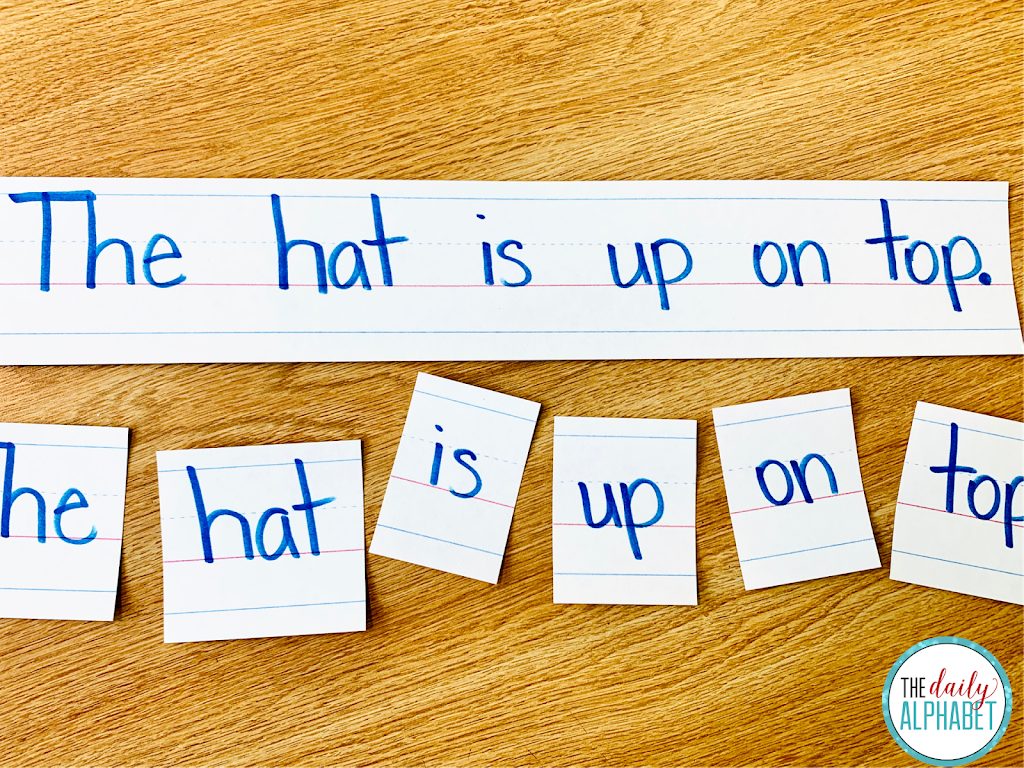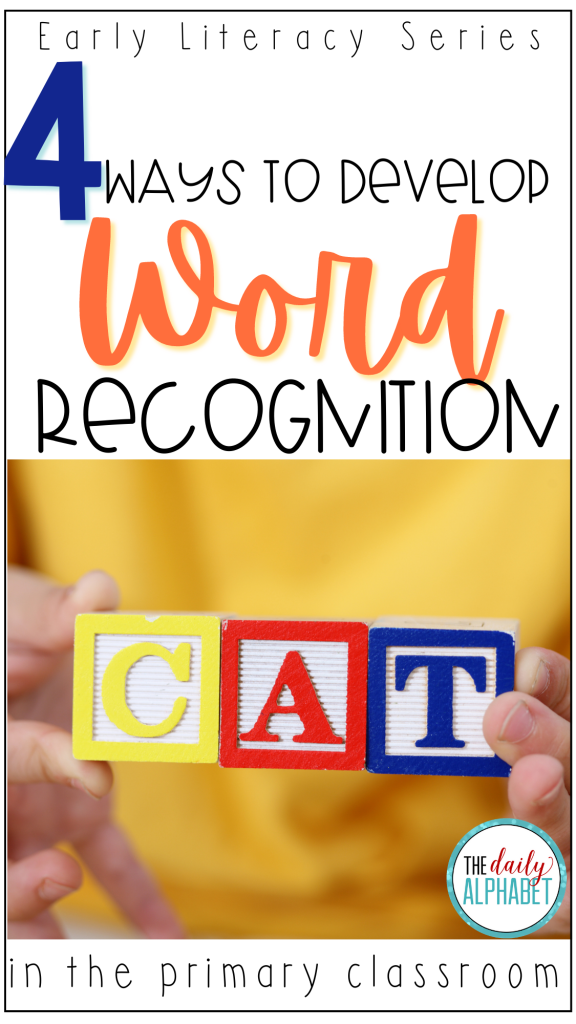
When little ones first arrive at school they are bombarded with a lot of new terminology: letters, words, sentences, sounds, syllables, rhymes, etc. As educators, it is our job to provide positive literacy experiences that reinforce what we are introducing them to. One area that I have noticed a struggle with is word awareness, which happens to fall under the phonological awareness umbrella. Students use words all of the time for oral communication, but that doesn’t mean that they know where words begin and end because it’s not initially important.
For a child’s awareness of words to develop, oral wordplay as well as being exposed to print and exploring print are necessary. There are some things we can do in the classroom to bring a focus to word awareness! Some of it we are already doing, others can be easily added into our routines!
Morning Message
Morning message is an old routine but a good one. It’s a quick way to develop word awareness! I’m so glad it seems to be making a comeback! Whatever your morning message is, you can pick a sentence from it, and have students clap one time for each word in the sentence. You can also draw a dot or place a sticker under each word, and then re-read the sentence. This helps to draw their focus onto each individual word.

Circles Game
I know what you’re thinking. What does circles have to do with developing word awareness? Stay with me! Put different circles on the floor, the color does not matter at all. Say a simple sentence. “The sun is red.” Repeat it slowly and have students step on a different circle for each word that you say. I begin with sentences that contain single-syllable words. Then I gradually (not on the same day) begin to use words that have more than one syllable. This helps students to realize that just because it has more than one syllable, doesn’t mean that it’s more than one word. This is something that many students struggle with early on.
Sentence Building
I used to have a lot of sentence building at my pocket chart center, but I realized that we needed to do it whole group, as well. You can easily choose another sentence from your morning message, you don’t need to come up with a new one. Give a word to each student. Have them to stand in front of the class as they try to re-create the sentence. Once they have mostly mastered it this way, it’s time to move it to the pocket chart for independent practice. You’ll be amazed at how quickly they gain word awareness with this activity!

Word Match-Ups
Continuing the theme of repurposing your morning message, you can pick a word from the message, write it on a separate piece of paper and then have students to match the words to the one in the message. You can use your old morning messages in a center, and write all of the words from it on separate pieces of paper. Have the students match them up! When I don’t want to repurpose morning work, I will write decodable sentences that we have been working on in small groups and have students match the words that way! It’s a great reinforcement for skills that have been previously taught!
These activities can be easily implemented in your classroom at any point in the school year. Sometimes things that are tried and true happen to be just what you need! I’ve found that I need to revisit these strategies, especially when I get a new student, or I find that I have a student who has some gaps when it comes to word recognition. Instead of trying something fancy and that’s difficult to implement, you need to be able to quickly review these skills!
Pin for later!













